Old Stuff as Real Stuff, and New Stuff, therefore:
 The Author of a very recent book, Adam Nicholson, exemplifies most of what is wrong with the academic adherence to the Pre-Classical Tradition of Classical Greek Scholarship. It strictly stipulates the Olympian Pantheon as the only valid belief system ascribed to the centuries before the Greek Dark Age, from 1190 to 800 BC. It c0nsigns to purdah any writing of prehistorical fiction that replicates the greatest myths originated by pre-Hellenes’ and the earliest Greeks’ Great Oral Tradition, 1625 to 1220 BC. The author affects himself as a prehistorian, but reveals himself instead just another autodidact out of so many at solely literary perspectives of what Early Greek Mythography recited or howsoever rendered otherwise.
The Author of a very recent book, Adam Nicholson, exemplifies most of what is wrong with the academic adherence to the Pre-Classical Tradition of Classical Greek Scholarship. It strictly stipulates the Olympian Pantheon as the only valid belief system ascribed to the centuries before the Greek Dark Age, from 1190 to 800 BC. It c0nsigns to purdah any writing of prehistorical fiction that replicates the greatest myths originated by pre-Hellenes’ and the earliest Greeks’ Great Oral Tradition, 1625 to 1220 BC. The author affects himself as a prehistorian, but reveals himself instead just another autodidact out of so many at solely literary perspectives of what Early Greek Mythography recited or howsoever rendered otherwise.
Why Homer Matters has been under recent review, by Bryan Doerries for the New York Times Book Review Section. The yachtsman baron Nicholson insists that we learn of the several epiphanies inspirited by Homer through his own recited cruising over the many seas that still comprise the Mediterranean Sea, but as known solely by their names during the Late Aegean Bronze Age. As usual he names them and terrestrial locales and mythic personages by Greek language spellings in Latinized English, in what’s called the Erasmian or Oxbridge manner of their orthography. Having brought himself to ports or landfall settings of those seas’ once exotic shores, he suddenly vaunts himself under the Muse Mnemosyne, and by her allowances he expresses her supposed pet peeve that nobody really can understand Homer as an armchair scholar. That is also the take of the Reviewer, a drama critic, upon Nicolson’s departure from “the reigning orthodoxy” about the origins of the Trojan War Era. Its hostilities must be held a composite conflict drawn from warfare as far back as 1800 BC, subsequently redacted, then distilled to recitative epics since the 13th century BC. What was finally brought too alphabetic writ just before 700 BC ended the reigning orthodoxy of Hesiod at affixing seas, lands and personages by the prehistoric Greeks of his utterly fictitious and bogus Heroic Age. For it was that infamous literary Age that led into the Classical Greek Mythology by which Homer and Hesios conditioned their contemporaries to accept as the only acceptable historical opera of Classical Greek Mythology.
 Image and Legend:
Image and Legend:
From bottom dating to top of the charting, Greek Prehistory by its Prehistorical Progressions up to Ancient Greek and Roman History >
Because this particular writer is now an old man, he can just barely guess where Nicolson got his special updates on Homer, of the conventional sort that he began to learn as a boy student of Greek. I must hazard the author possesses a highly redacted retention on whatever he learned about the First Master, notwithstanding the Mother Muse’s warming of his brains. For instance, most all classic scholars from the 1950s onward had to suffer still the pestering of the pre-WWII Oxbridge Dons awhile their learnings of the Late Aegean and Eastern Mediterranean Ages. I prefer to call them the High Professoriats by conceding them academically enormous, even outsized, by influence upon how and what is (or must be) taught of Greek and Roman cultural literacy for mainstream retention by our well-educated humankind. Such a stripped down literacy has been replete with mistakes about what the prehistory of the Ancient Greeks was about, because they were poor historians who purged or expunged or overly abreviated so much that they deemed disgraceful by their repugnant forbears. It should be recalled that the High Professoriats once insisted that the Trojan War was a century older than its best substantiated duration since Carl Blegen, to wit, from 1250 to 1240 BC by the middle dating method of the Egyptologists. Professor Blegen (Univ. of Cincinnati) estimated that particular duration late in his successful lifetime at two very famous digs — the achaeological site of Nestor’s Anaktora at Ancient Pylos, the Chora of Messenia today, and of Fortress Ilion and City Troy at the previously unearthed Hissarlik, Turkey, by Heinrich Schliemann. Ever since, highly offending arm-chair scholars defined the bardic careers of Homer’s sources to have spanned from early in the Greek Dark Age of the 12th century BC. For only by way of recitative compositions of rhapsodists living from 1187 to 777 BC could Homer’s oral tradition of epic recitals have survived so marvelously intact, and ever since so memorable.
The latter date demarcates the Lyric/Archaic Age by a beginning epoch which is best termed the Greek Renaissance. It was as brief as that one century because Homer and Hesiod passed their lifetimes and creative careers within it as well. For the High Professoriats have always refused to tell us of college matriculations that the Ancient Greeks soon arisen after them both had not the least idea of how to date the Trojan War or any great events before it. Somehow Nicholson fails to mention the many worthy prehistorians that have placed Homer for living in the 12th century, but then the 11th , and for a very long time afterwards, during the 9th century. Hesiod was first deemed an admiring younger fan of Homer at festival poetry recitals of the 10th century’s most talented rhapsodists, although nobody could pin down the existential facts that lay behind his talents for misogyny, such as permeated his acculturation as first master by the Ancient Greeks. Scholars have finally had to admit of an Athenian/Ionic orthodox polytheism centered upon their Greek Olympian Pantheon as religion sine qua non. The ancient stylizations of gods and goddesses intrusive into the lives of personages who populated the Heroic Age just happened to turn-out slyly disrespectful and sometimes defamatory of great heroines, titanesses, queen matriarchs and queen consorts to patriarchs. So the Eighth century thrust of the brief Greek Renaissance came out of an obscure era of earliest “Archaic” Greek festival drama, which had not survived as written down, but was festively enacted from really awful playbooks by ahistorical Greeks.
Ignorance Remains a Bliss:
Pedant Dons and autodidacts like Nicolson haven’t ever conceived possible an early literary Greece by an evolution of mythic writ off syllabaries. Or one that serendipitously anticipated the masterpiece recitations of wondrous rhapsodists plying the recitative trades throughout the Greek Dark Age. They also do not consider west coastal Anatolia as early established of such a literacy, offering mainland and offshore haven in waiting for active scribes such as crossed from the once most ascendant regions and cultures such as the Saronic Gulf Rim. Instead, the tenet of high academia still goes, nothing could ever have been written off any of the pre-Hellenic syllabaries of either Linear A Minoan or Linear B Oldest Greek, Both were well-employed during the six Late Aegean Bronze Age centuries, and especially so by the early Fifteenth and throughout the Fourteenth and Thirteenth BC. To amend that consensus had taken Michael Ventris to prove otherwise, that scribes at their syllabaries availed themselves of sufficiently viable portable media. The scripted Oldest Greek at length captured the euphony of a robust, highly nuanced vocabulary and a grammatical range of astonishing linguistic advancements. Such had become of its popular rules and traditions awhile strictly orally recited and brought to writ by scribes of syllabaries .Such a vista into the far past works hypothetically for our own working purposes, albeit a jotting down best suited to tabular writ. The last form of scripting a recitative language has itself barely survived from the entablature of accountancy and annotation (effectively only jottings). And yet across the Aegean, the west coastal Greeks of Anatolia never knew of cuneiform writ which managed to expound Hatti, or Hittite speech, long before their Imperial Age, 1380 BC, ff.
From Alice Kobers’ clarity at constructing consonant/vowel pairings, and proving syllabic writ at advanced evolution, Ventris finally realized the decoding of Linear B; what had been called for most decades before the 1950s Linear Minoan B entablature. Discovered and compiled off the digs, that Minoan language proved a Greek in replication of an advanced evolution as writ. Scholars were still only reluctantly induced to admit, after much protest shouted loudly, that a very mature Oldest Greek was achieved by an advanced literate elite along the mains and fareways of Greek exported maritime commerce. Heralds and couriers employed scribes along the entrepôts most frequented during the Fifteenth century BC, ff… That preceded 1450 BC, the still established pivotal date for when Mycenaean conquest of Minoan Crete to dominate thereon the highly advanced culture of the Island. Until the abandonments of the Cretan palace metropols of the Late Minoan Palace Era, Linear B Oldest Greek must have been productive of mythography by syllabic writ over a fifty years span.
Some big questions still remain of a gestalt nature: ‘Why wasn’t Minoan syllabic writ, either Linear A or B, transposed from literary tablature to some alternative portable media elsewhere deposited? Why not authors at good yeoman duty as scribes alike Ancient Cypriots or Rhodian Islanders, either of whom lived in small colonies or enclaves over the last three centuries of the Late Aegean Bronze Age? Why weren’t the copious recitations comprising the Trojan War Saga transposed into Greek Mythography off the popularly performed rhapsodies overlapping the first centuries of the Greek Dark Age?
Answer: The Sub-Mycenaean and Iron Ages no longer utilized syllabaries because illiterate Illyrians, Dorians, or Denaric Alpiners in general compelled a waning highly literate age to become lost within their savagery and ugly ignorance.
Is that, though, really to be believed?
The Rhapsodists of both Light and Dark Age Floruits
Those are the queries that lead me to hypothesize working syllabic writ of whole works of a literate equivalence to popular rhapsodic recitation. The rhapsodists were the unwitting, perhaps even the inadvertent transcribers who subsequently enabled a convergence of popular transcription until they became instead the first transpositions or “translations” into alphabetic Greek by the early Eighth century BC? For therein lies the answer to the composite big questions poised above. Too which I can add, the robust subject matter of heroes, heroines and glorious regions of the Heroic Age fed popular interest to compose by either forms of an excellent, most orally recitative Greek.
Hypothetical big questions can and do lead into other sound working hypotheses. They yield at last robust and yet realistic speculations about robust compositions read aloud rather than silently read.. That quick-step evolution cannot disgrace the earliest writ accomplished by Lyric Age Anatolians who could barely but who spoke eloquently an Oldest Greek of an Ionian inflection, or of dialect developed from Greek of the alpine Peloponnesus’ Arcadia, before the Trojan War Era (1260 to 1200 BC) had ended. Why, accordingly, weren’t Homer’s copious sources from within an ending Light Age, so early admissible as epic redactions of copiously verbose recitations by rhapsodists who sprung up early in the Greek Dark Age? They, all else said, were the popularizers of writ, and rhapsodists such as Homer had elite scribes available them to take down dictation or transcribe collaborations of literate scribes and inspirational bards… The two masterpiece epics, earliest ever composed to draft writ, became copied regularly, thus further popularized.
That means only a final quick step, or easy leap, to masterly edited manuscripts. For that’s how I once was taught were the richly sponsored versions so formally commissioned into full manuscript projects and exercises. Illustriously directed by the tyrant Peisistratus of Athens in the Sixth century BC, thereby the first cited full manuscripts of The Iliad and The Odyssey. With that edit milestone by Greek prehistory, so too when Athenian historic mythography The Bardot Group concludes its careful explications of how and why Homer mattered so early and greatly to both the Great Oral Tradition and to the pell-mell excitement which charged earliest alphabetic Greek so immediately within the Eighth century BC.
Image:
Legend: A mythic Portrait of Peisistratos which enacts his bold and vainglorious moment during his Archonship to rule Athens, whereby he appeared as though appointed to that title of governance by Athena in epiphany of herself to the masses. Here he’s at parade with the Goddess standing beside him, before he used his affected dramatic sensation to pull off a coup d’etat over earliest Greek democracy, whereby becoming a tyrant by divine acclamation. Peisistratos subsequently commissioned a transcription of Homer’s epic masterpieces to publish privately the first ever manuscript known and contracted of Homer’s epic masterpieces.
The Intolerance of the Ancient Greeks and Ancient Historians
Allow me a brief exposition of how the Athenians made sure that Homer mattered very little to their orthodox histories and belief systems of the earliest Greeks: They were in control of what mattered, and they used their powers without honest recollection of how Early Greek Myth originated historicity. For honest recollection unsullied by revisionism is what prehistorians are seeking. But that said, the failure to find historicity within the content of myths might just beg the main question: What’s so impossible about the possibility of a writ by Oldest Greek syllabaries which long preceded the Sixth century manipulations of prehistory authored by Athenians of Ancient Greece? Weren’t Homer’s masterpieces redactions of some eight major epics recited well and frequently before his lifetime at passing onward honest remembered recitations and/or compositions that agreeably proved Homer’s sources of written epic? Or were the rhapsodists so greatly inspired him also so much more artistic at preserving his source content than the most proficient scribes who were enabled at last to take him down by dictation? There would then have emerged controller of alternative media besides oval clay slabs whose firing into tablets became all that survived.to validate Oldest Greek as spoken to good uses? Why, therefore, was it so impossible that the honest original sources, either oral or by writ of syllabary surviving, came over a few centuries as clean copy for the Greek alphabet plagiarizers, or mostly dishonest Athenians? Or is it so impossible that lost compositions of syllabic media composition became at last most expeditiously transcribed just as soon as the Greek alphabet’s popular diffusion began?
Finally, why did the Athenians handle such materials with so much deliberate dishonesty? And why has that slander of them been so ably and continuously repressed throughout our Ages of High Professoriats? Or doesn’t Homer much matter very importantly any longer, just as Nicholson seems to seriously infer?
Fiction versus Non-Fiction: Early versus Classical Greek Mythology
If Homer to still matter to all living this 21st century AD and beyond can only prove out by being in keeping with his superb artistic portrayals of the Heroic Age of Greek Culture, Values and Beliefs. They were, however, mostly late Bronze Age constructs, at loss of all content historicity by the Iron Age, or, alternatively, upon the lapse of the Late Helladic Period 3C. Both prehistory and history must attend the intellectual honesty that Homer imbued to those past times as settled afterwards in his own Iron Age. Despite all that the Ancient Athenians have done at violating that honesty, Nicholson doesn’t seem conscious that authentic take-offs of period representations of very much importance. The Bardot Group does.
Nicholson also seems to ignore how Homer was so careful to avoid reverse anachronisms while at his popular condensation of the Heroic Age, and awhile his earliest collaborative composition with a contemporary master of writ. His Iron Age culture could not have any pertinence to his treatments of strictly Bronze Age customs and habits. Because they weren’t.
That’s why Homer should, and likely will, matter immensely to future times.
The most famous cited instance of such care and avoidance of anachronism by Homer as a conservative prehistorian has been his treatment of chariot warfare particular to the fields of battle described within the Iliad. The Master renders himself acutely aware that chariot warfare was going out of practice at the end of the Late Bronze Age. So, too, for a waning of tactical repertoire and state-of-the-art, either as martially speaking. Teams of paired steeds hitched to the pillar of a chariot were mostly handled by equerries in a manner to expedite their heavily armed liege champions and heroes across opposing battle ranks to a best place or station at demonstration of his formidable fighting value on foot. So chariots served solely as taxis, and that way of the carts comes across as a poignant example of their sustained usefulness. Despite the wane of chariot warfare as full charges of foes against each other — such as the versions of the Egyptians and Hatti at the 1286 Battle of Kadesh render strategically, historically and respectively through hieroglyphs and cuneiform epigraphy. Moreover, at only fifty years apart two non-fictional chronicles about that chariot warfare evidenced the downward trend to how useful the actual war practice. And yet that very tactical impact was put to durable record through a most honest fictional epic recited and finally composed by a complete foreigner, an Anatolian Greek out of either Chios Island or mainland Smyrna.
I have to suffer a few hard rules. I am a prehistorian at writing non-fictional expository subject. I’m a proto-historian, which to say a writer strictly of fiction, when I write about the Heroic Age of the Greeks. My sources are strictly oral as the latter when I’m writing mythography by Early Greek Mythology, although I use Classical Greek Mythology as a means to getting back into the times when the greatest myths and sagas were originated.
As a modernist, therefore, I contrast myself favorably to the Ancient Greeks, who were dishonest prehistorians about their own forbears of the Bronze Age, and gross revisionists by making up a make-believe Heroic Age. Much of the early Ancient History of the Greeks was by Athenians who were forcing upon their famous dramatists an orthodox polytheism and wrong facts of history that was essentially fictional, or plain spoken mythography. My provided image of Peisistratos, Tyrant of Athens, serves a rigorous example.
What must also amaze us, and what spurs me to revive the honest mythography that Early Greek Mythology is by the Great Oral Age from 1590 to 1190 BC, is the genius and innate capacities of Greeks living long before the Ancient Athenians to remember exactly what they heard. In modern times we greatly acclaim the photogenic mind for the capacity of the brain that enables one. But we do not know well, if at all, any audiogenic minds whose brains served bards and rhapsodists their capabilities to enunciate exactly what they heard from oral recitals. What also must amaze us is that the audiogenic mind that retained all of any myth at its time of origination. It means nigh perfect retention of accents, inflections, period idiom and expression, and for my purpose of these Bardot Blogs, any historicity embedded in original accounts about real persons who became heroes and heroines by make-believe regions, wholly undated times and mostly by lost or expunged ascendant civilizations.
The Final Olympian Pantheon and How it Evolved:
For the purpose of concluding this Bardot Blog posting, I wish to discuss to run down the prehistory Oldest Greek religion by articulating as briefly as possible how the Greek Olympian Pantheon has never been properly treated by our academic High Professoriats. Because that sets up my arguments why we should be quashing them so that Homer can really matter from this current century going forth to the many far future.
Image: The Greek Olympian Pantheon as a First century AD Bas Relief affecting an Archaic Age Stylization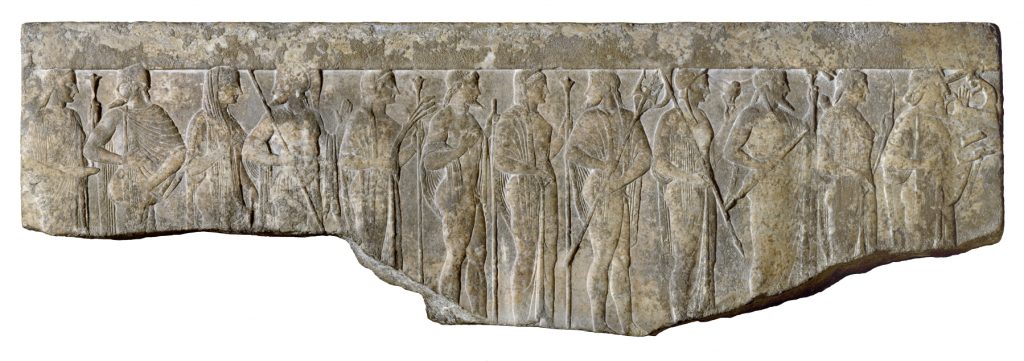
I take off from the final pantheon realized by the Fifth century BC in accordance with what the Masters of Greek Drama probably deduced it from Lyric Age Greeks. What follows does not accord with the positioning of the deities from left to right, but Hestia appears at the extreme left as inclusive the Pantheon.
Zeus, who declines by Greek as though by nominative person Dios originally, was for most of Greek prehistory before the Dark Age addressed as Son-of-Kronos. That had him a titan grandson of Gaia the Earth Mother by the Greeks’ Oldest and Ancient Beliefs. A Cretan “Man-God” by origination and meaning of his evolved proto-Indo European name from Dyaos, Zeus underwent a very important transformation of his godhead during the Trojan War Era. On account of that conflict, Greeks brought him home from fallen Ilion as a Storm God, but still the grandson of Ouranos son-of-Gaia by the first primordial order of her immortal progeny. What really mattered, moreover, was a new Zeus, a forged replica of Teshub, the monotheistic chief deity of the Hatti and their Imperial Age. A people we have best known as the Hittites from the Holy Bible were really an advanced equestrian culture best named Hatti.
Hera, the Queen All-Holy-One over the earliest settled Greek Pantheon, presents us with complex issues of philology concerning her final name before it became so agreeable to all Ancient Greeks. It derives from Rheia daughter-of-Gaia, a sister of Ouranos, but she was originally the Cretan Earth Mother and Creatrix. Primordial mainland Greeks replaced her with Gaia or Gë as the crone Goddess over a trinity to which Rheia was the matron deity. Hera proved a paramount exception to such trinities, however, by a religious rule of ranking especial to herself which hearkened from later Orders of Creation populated by preeminent matriarchal deities. Hera was excepted from trinity characterizations of earliest known goddesses as (1) transcendent crones of specific aspects, whose daughters of synonymous aspect ruled (2) as matrons, who gave birth to maiden daughters (most often only one) empowered with an immanence to incarnate themselves as mortal. Hera, however, born from Rheia, became composite as her mother, perhaps as Errhea, until finally Hera proved composite Hera a crone, Hera a matron and a maiden Hera as a single embodiment of divine trinity. No longer believed such during the Dark Age of Homer’s Eight century lifetime. Hera became famous immanent for her eternal beauty, allure and fecundity, or of the form she presented to the fantastic Judgement of Paris, By it she still lost to Athena, another matron form goddess as originated, and to Aphrodite, the Titaness embodying Love, Lust and most stupefying loveliness of figure. By consolation, Hera-Hera-Hera became the paramount tutelary deity of the alpine Highlanders who fought for their stolen Queen Holy Matriarch. This is an essential observation, moreover, to a full understanding of why the Highlanders’ Great Goddess achieved her pre-eminence over the Greek Olympian Pantheon throughout the Trojan War. She matched herself against Teshub and Apollo (see below) to win the war for Greeks, but the Dark Age set her back to wife, mother deity and queen once the Greeks became misogynist and strictly patriarchal after the manners and culture of Asians.
Poseidon encompassed the three original ethnicities of earliest Greeks as the foremost Man-God of the pre-Hellenes who coalesced them. Peculiarly, his name is derivative from the Cretan Sea Goddess a/o Sea Mistress Poseidonia. He originated other name, too, which were epithets. Foremost he was (a) the Cretan Consort God of Fonts & Springs, who had irrigated the Earth Mother to create all deified rivers and springs; (b) the Aeolian Horse God, thus paramount by the equestrian culture by the Pelasgian “Pony People.” The first waves of Aeolians, and then the Minyans and finally the Achaeans were converted from their homeland deities to veneration of Poseidon. His last name, or epithet, was (c) the Earth Shaker. He became by the Dark Age at very high place in the Man-God Trinity of Dyaos, Dön and Dis, the primordial precursors to the Olympians (1) Zeus/Dios, (2) Poseidon and (3) Hadis or Hades. He assumed the powers of Ourania and Thalassa, whom Gaia had invested as her granddaughters and Titanesses, Sky and Sea Goddesses by Second Order progeny of the Creatrix. Became the Olympian Sea God, named Neptune by Roman Classical Mythology, and no longer the Consort of Cretan Poseidonia, he married Amphitrite the eventual Sea Mistress over all creatures of the Abysmal Depths. His earliest and still most famous depictions have him a Titan Triton at seizure of reins harnessed to eight sea-stallions. He coursed their drawn chariot through waves at tumultuous speed, the seas of passage thrashed by their fishy hindquarters appending fluked tails.
Demeter, the Goddess of Agronomy, was wrongly considered by the Ancient Greeks. One of the oldest Olympians, nonetheless, her Eleusinian Mysteries were celebrated and protected by the Saronic Gulf Rim Powers in loose league with each other. Ruling Agronomy as its science and art, she reflected the last era of mostly matriarchal religion and venerations of the Late Helladic Period Bronze Age Greeks. Her tutelary capacities over farmers and herders went back no earlier than the Late Bronze Age as the “Mother Measurer” or “the Apportioner,” pertaining to times of the Idyllic Age when Gaia’s newly created mortals need not toil upon the land or render earth movements conducive to reliable agriculture and cultivation of tilth. She was revered at par with the goddesses Cretan Rheia, the Goddess Hostess Hestia, and crone Themis. They were a loose Trinity, representative of the practical wisdom and mantic traditions which evolved humankind throughout the LABA. Anatolians did not believe in Demeter, but she was at par with their Aphrodite, thus subsumed within a decidedly Asiatic Great Goddess who bore the same prime aspects and gifts to humanity, those of fertility and procreative force. Always to be emphasized of Demeter is her duality as a matron goddess and maiden daughter Korë, “the Corn a/o Grain Maiden.” As matron she ruled the bounteous fair weather growing season while the Maiden ruled the blighting five winter months of her mother dormancy. In fact, the later name for the Maiden Korë was Persephonë, which can be translated idiomatically as “Destroyer of Killing” (or Wintertime Blighter), tantamount to regeneration of bounteous earth by quiescence of Demeter’s kinetic force.
Aphrodite “the Surf Maiden” was a mostly aloof, imperious matron goddess until she became the alleged mother of the Trojan War hero Aeneas. Worshipped throughout northeast Anatolia, and by genesis of native Assuyawans, she was akin to the Anatolian Hatti’s Great Mother Goddess, the “Lady of Arina.” She was matched to Levantine Astartë and Ashtoreth, and like them both she became greatly reduced of veneration upon the preeminence of patriarchy (Teshub, et al.). Those goddesses were all still great over the various imperial ages of Mesopotamia and the Eastern Mediterranean Shore. Aphrodite achieved of a highest stature by the Greeks as a formidable Titaness, because she was supposed borne into the Second Order of immortal creations. She was never autochthonous or earth-born, because her genesis has her arisen from the sea as sired by the cast-off genitals of her father grandfather Ouranos. His invested totalitarian force of pre-ordination was “murdered’ by the scythe of her half-brother Kronos’ wield. Love and Lust were the Goddess’ most powerful inducements, of course, because she controlled the irrepressible urgency of All Living Things to procreate. Her force was both catalytic and of strongest “material” impetus as deemed carnal by the Greeks. They must not be underestimated at their beliefs in strong emotions of humankind as having physical force “of matter.” Under the name Baubo, Aphrodite was incidentally tutelary over prostitutes and women coerced to carnal debasement by being enslaved or indentured outside the bonds of wedlock.
Hephaistos was the Greek God of highest skilled Crafts and Metallurgic Creations by origination of the oldest oriental peoples before and after the Levantines of the Near East. Those venerating coastal nation races of the Eastern Mediterranean extracted ores and minerals throughout that sea’s basin. Their family and clans discovered all of its vastness and exploitable resources while remaining homeland centered upon fortress harbor cities along modern Syria and Lebanon. He was popularly venerated by the Greeks as a deity of greatest inspiration of smiths who could forge or engineer practical devices by his unique material sciences, all alike alchemy. And yet he was capable of most wonderful creations by his transmutations of the Earth Mother as his only provider of resources. By Classical Greek Mythology his mother was deemed Hera, but that was a maternal kinship born no earlier than the Greek Dark Age. Of course, he was equated powerfully with the ensuing Iron Age, but most of myths and stories about him originated by odd ways and means to Athena, whose practical arts and sciences seemed counterpart to Hephaistos’ by her genius so strongly related and inspirational of his practical powers to wield inorganic matter. She was foremost at art, moreover, whereas he was the paramount deity by the sciences of wielded power and forced transmutations of matter as by hand.
Athena: Her genesis is primordial by her mother Themis who rendered her aspect of a primal city “queen matron goddess” before there were few, if any, cities. But she owned an aegis under whose powers mortals gained many divisions of skilled labor requiring works in mass. For warrior she was Goddess of Strategic Powers invoked to defeat enemies, but that was mostly by her love for valiant and shrewd men such as the famous Odysseus of the Trojan War. She most certainly had her favorites but her powers were limited to her inventiveness to be conjoined by other goddesses and gods to her purposes. The Ancient Greeks rejected Themis as a moth and excluded her from their Olympian Pantheon. She became a favorite of Zeus “for being of his same mind,” because her genesis was to be born freakishly out of a lobe of his brain. Those much later Greeks also had Hephaistos messing around with her, although his covet of her charms — she was distinctively beautiful for vying with both Hera and Aphrodite, but only because the Ancient Greeks conceived them all as maiden goddesses of they chose to be immanent by that form.
Apollo: Never a god of a primeval order of creation, he was not a Greek or Olympian God until he was discovered during the Trojan War as the Trojans pre-eminent God, albeit in second place as such to Teshub as venerated by their imperial masters the Hatti. (refer back and above). He also was named by epithet as Smintheus, and venerated by that invocation by the large Lesbos Island and the mainlanders who lived across its Adrymittion Sound. His martial force was that of archery, by aiming deathly darts upon victim rendered diseased by illnesses. Such silent death dealing had considerable force sensibility to the Greeks, who picked up on his awesomely attractive image and made him one of their paramount Olympians. Both the Greeks and Romans stole powers from other deities as gifts of immortal grant to Apollo: Powers of Prophecy taken from Themis; Gifts for Music from Hermes; and the Sun’s Luminance of Day from Helios Hyperion, the dual father/son God of the Son as both created by Gaia.
Artemis: The Greeks considered this truly great Goddess of Asia as the sister of Apollo, because of her mastery of archery and prowess at hunting and enabling hunters. She came out of Asia during the Trojan War, where she was a matron form Goddess of Fecundity, or a supreme goddess of many goddesses of fertility. The Greeks ceded to Homer by making her a barely nubile maiden of an eternally virgin teenager. Before they did so, however, the Greeks had venerated the Huntress Maiden as the daughter of the matron Goddess Beasts Wild, and granddaughter of Gaia/Gë. I am somewhat a unique mythologist for believing with conviction that this subject goddess solely by epithet as Huntress Maiden was integral to the land-locked, deep interior alpine domains of the North and South Mainland Highlanders. Her immanence among hunters and gatherers was no only earliest primordial, but she was tutelary of a unity of all tribal matrons and their male leaders over hunting brotherhoods. They in turn adopted and nurtured run-aways and refugees from displacing conquerors, who stole their lowland homelands to make them the formidable coastal powers that they were by the Late Bronze Age. The Ancient Greeks, by contrast eschewed such connections to primordia and made her into a midwife to the birthing of all animal life, a helpmate to Mother Goddess Hera in like capacity under the epithet Eileithyia the Midwife. As an earnestly invoked comfort to nymphs, or very young brides, at experiencing their first pregnancies, so for the many thanksgiving rites that attended requited satisfaction of maidens’ wants of maternity.
12. Hermes: Classical Greek scholars have always been of consensus that escapes my understanding, to wit, that Hermes originated from an Egyptian pantheon of oldest deities, in sole replication of their god Horus. Because his primordial past is so murky, including his vague mother Maia, or “: Old Girl” so-called, they also find easiest to relegate him to the Idyll of pastoral delights in high countryside verdure and magnificence. There he stays constantly watching the trails as the God of Cairns, whereby the markers of trails, paths and traces so necessary to caravan merchants, heralds and couriers. Lurking upon those trails he was deemed always on the lookout for slave maidens running away from cruel masters or otherwise escaping the toils of their lowland birthplaces. He competed against rivers and streams at planting the delight of his seed in such stray women, because he seems to have had far more sex appeal than a river god or lustral water deity of a passing pastoral stream. In the Classical Greek Mythology, Hermes is the Messenger God or Angel of divine communications, awhile safeguarding such couriers at sovereign duties as between the late great powers by the Ancient Greeks. He also displaced the Titaness Iris the Rainbow, a first ever Angel of the Greeks at verbal messages. Iris was also the guide of souls of the newly dead to the Afterlife, or Underworld, or Dismals of Hades. Hermes stole that role and guidance from her.
Ares: The Bronze Age Greeks performed rites which both honored and propitiated Eris Goddess Strife and her son Enyalios, whose aspect made him a War Titan. The Ancient Greeks eschewed both deities by introducing Ares to the Olympian Pantheon during the Greek Dark Age. The origination of the godhead by Classical Greek Mythology places to Thrakia/Thrace. Of course, the Roman Classical Olympian, Mars, says so much more than the Greeks seemed to say about their own warrior deities. For it does not seem that Ares featured largely in any of the greatest military careerists, whether they were Helladic, Ancient or Hellenistic Age Greeks.
The last Olympian to be Included, Dionysus:
The Bardot Group has long concluded that Themis was the twelfth and most obscure Greek Olympian for being also the earliest so luminous for her mental powers to be included in the Pantheon. So I have Themis the crone deity in part to a trinity of Goddesses over absolute genius, howsoever reckoned. Her daughter was Athena, the matron form Goddess within the trinity during the Late Aegean Bronze Age. She was also acclaimed by epithet as Holy Queen of By such matron stature, moreover, she was the Patron Goddess over the Ancient Atticans from as soon as they became patriarchal by retirement of the ancient order of rural governing matriarchs. That order ebbed away as the House of Aglauros and its last should-be sole sovereign Prokris, the High Princess by the House of Erechtheus whom Cephalos married after the Second restoration of the Kekropids and Aegeus became King over the Atticans.
Hestia later replaced Themis late in the Greek Dark Age or within the Archaic Age that followed. The Ancient Greeks of the Classical Greeks finally included her formally in the Olympian Pantheon. It is greatly to underestimate Hestia to simply state her a tutelary goddess over the hearth which welcomed all visitors to homes or sacred places beyond their thresholds. She stood for good order and high mannered good conduct. The Greeks very much wanted her approval, invoked her as a strict decorum, even as they also deemed her the quietest, most serene and least intrusive of all the Olympians.
Dionysus, we think, began his rapid course at evangelizing the Bronze Age Greeks at about the last half of the Fifteenth century BC, He originated in Thrace or from what became Macedonia of Northern Ancient Greece after the Dark Age was over. He swept his cult followings of frenzied Maenads and festival Bacchanals caused uprising and overthrows of all patriarchs who asserted too boldly the preeminence of males over females at highest positions of sovereignty. Such vaunting men were many in the century of his rampant progress through the eastern Greek Peninsula until his final chosen locations of pre-eminence within the Greek Archipelago. His name sounds like “Island God,” but there’s no solid agreement about that semantic by his name. There’s theory that a son Bacchus was born to Semelë of Kadmeis or Thebes, but his birth caused her banishment to Naxos for taking a lover without the approval of Actaion, the heir presumptive to Kadmos and her nephew who coveted her lustfully. She delivered Bacchus upon that Island where a king of righteous ways fell in love with her and married her. Back upon her homeland Thebes, the Huntress Maiden lured Actaion in retribution for Semelë’s banishment, whereupon his trespass upon the holy groves of her woodlands and festival maenad celebrations of the wine harvests and the distillations from bounteous fruits of autumn. The Huntress Maiden discovered him a sinful voyeur of her cults, a sin of a vulgarity that earned him a hideous murder by metamorphosis of his appearance as a stag for his hounds to chase down, kill and devour. His genesis as Bacchus was shared by both Greek and Roman Classical Mythology, but only during the ages their ancient histories. The Greek Bacchus was renamed Dionysus upon his apotheosis and acceptance into the domiciles of the Olympians upon the holy mountain for which they’re named.
Greek Mythology as Evolved from a Dichotomy of Mythic Recitation and Mythic Writ
The Greek Olympian Pantheon that was finalized to a last set of twelve major deities has meant that the Lyric and Classical Ages set firmly an orthodox polytheism that proved to eclipse most all oral prehistory of Greek religion before their durations. Early Greek Mythology became the opera of rhapsodists and bards at amazingly precise audiogeny for the spoken Greek most originally conceived and debuted. Accordingly, it is solely an oral opera of the Oldest Greek Spoken. As the Greek language evolved further to three major dialects — Ionic, Aeolic and Doric Greek — so as well did their alphabetic writ by which they achieved orthography of expression.
I end this posting on that last observation and due respect for the Early Greek recitals of a magnificent opera that the Bardot group has sought to recapture through a New Greek Mythology. Where we are going is far back into the most original recitals of the most famous Greek Myths first recited during the Late Aegean Bronze Age. There and then is where we must rediscover them for how they were at origination or genesis. There and then, moreover, is where we can recapture their original content as barely surviving of a historicity that speaks robustly for Greek Prehistory.
 for the Bardot Group
for the Bardot Group
- Arion, a Journal of Humanities and the Classics, Fall, 2011, Boston University Press
- L. West,The Making of the “Iliad” : Disquisition and Analytical Commentary, 2011 Oxford University Press, 441 pages – $160.00
- Adam Nicolson, Why Homer Matters, Henry Holt & Company










 Since Early Greek Mythology means for us solely oral source recitations, in general, allow nevertheless that other great scholars to our best knowledge have ferreted out, or taken reasonably upon faith, corroborations of mythical historicity despite the lost writ by formulized syllabaries of the Greeks extant during the long last floruit of the Late Aegean Bronze Age.
Since Early Greek Mythology means for us solely oral source recitations, in general, allow nevertheless that other great scholars to our best knowledge have ferreted out, or taken reasonably upon faith, corroborations of mythical historicity despite the lost writ by formulized syllabaries of the Greeks extant during the long last floruit of the Late Aegean Bronze Age.
 A duration from mid-1266 to 1230 BC, its truest knowledge necessitates an almost complete abandonment of credence in Classical Greek Mythography. Its mythographers engendered a 30-year close of that era, whereupon it vanished and the Late Helladic Period IIIC began circa 1190 BC. We have to recognize the hard fact that the Bronze Age Greeks never actually knew who the Trojans were before Troais became a High Kingdom of northwest Anatolia. The 40-gap years became very prolific of recited epic poetry and fulsome prose accounts, such as survive from Quintus of (Anatolian) Smyrna. He lived within a coastal entrepöt inhabited by the many Greeks who had chosen not to return to their homelands upon the Greek Peninsula and/or Archipelago.
A duration from mid-1266 to 1230 BC, its truest knowledge necessitates an almost complete abandonment of credence in Classical Greek Mythography. Its mythographers engendered a 30-year close of that era, whereupon it vanished and the Late Helladic Period IIIC began circa 1190 BC. We have to recognize the hard fact that the Bronze Age Greeks never actually knew who the Trojans were before Troais became a High Kingdom of northwest Anatolia. The 40-gap years became very prolific of recited epic poetry and fulsome prose accounts, such as survive from Quintus of (Anatolian) Smyrna. He lived within a coastal entrepöt inhabited by the many Greeks who had chosen not to return to their homelands upon the Greek Peninsula and/or Archipelago.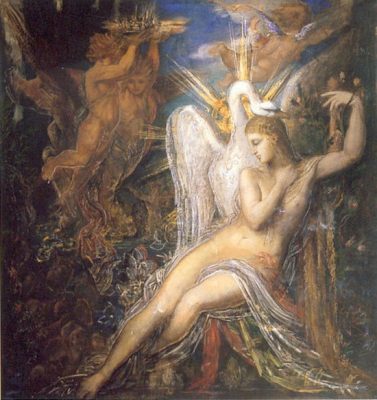

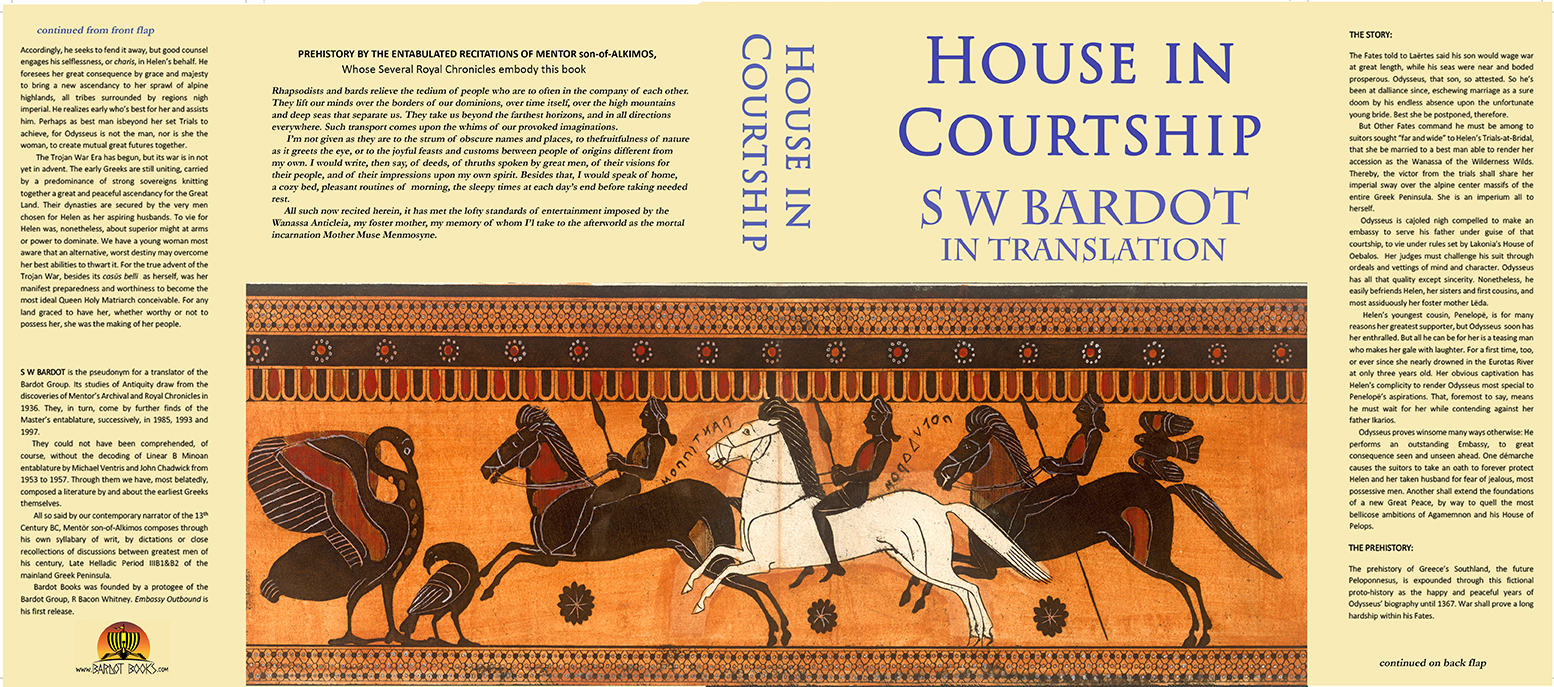





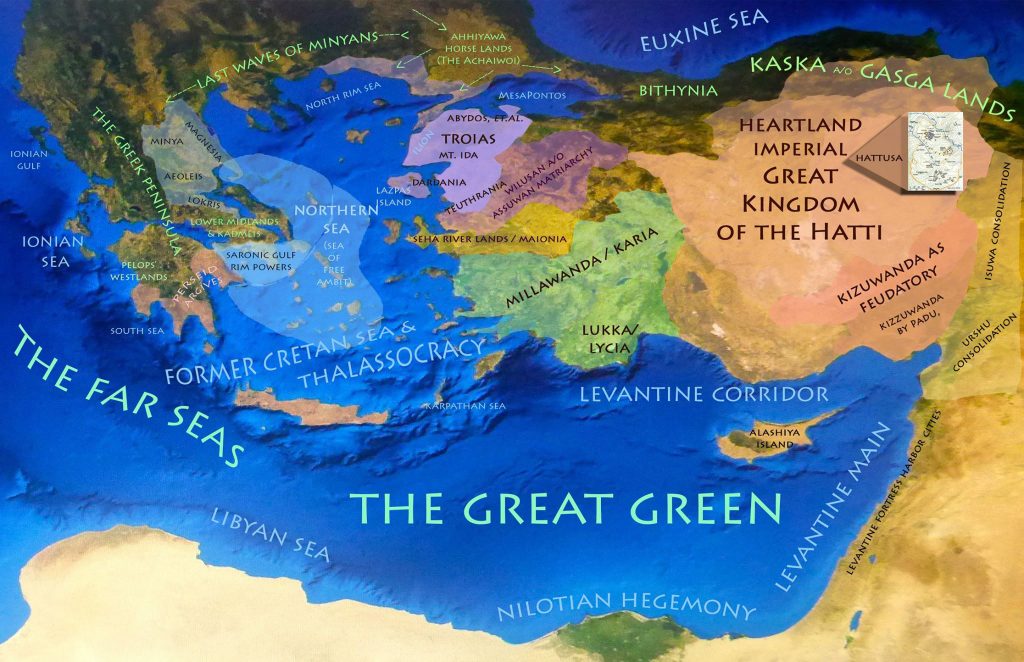
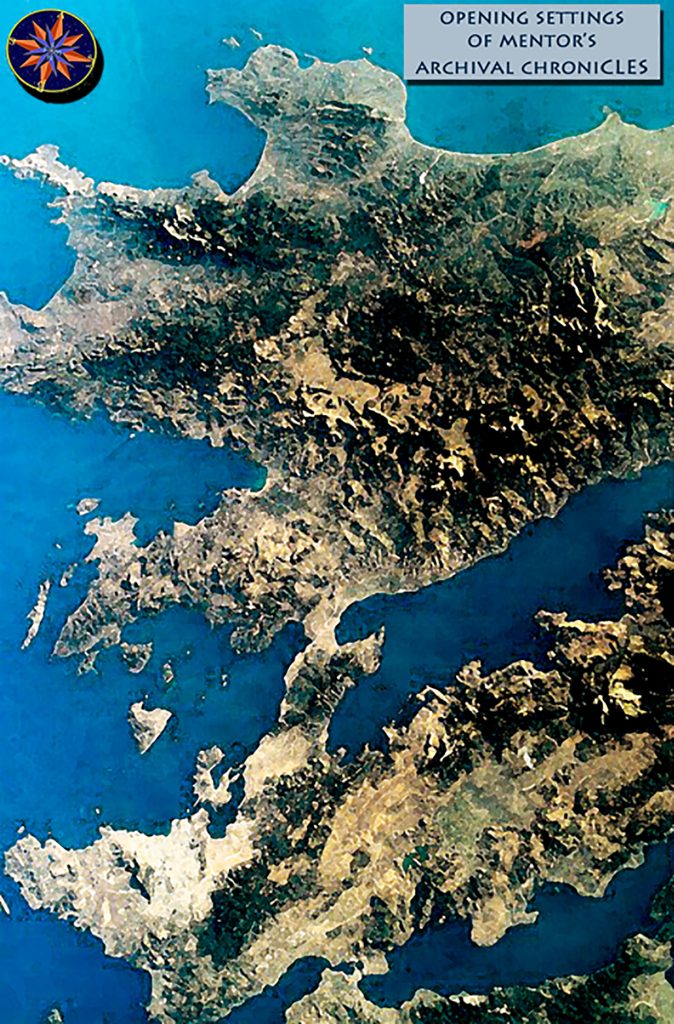
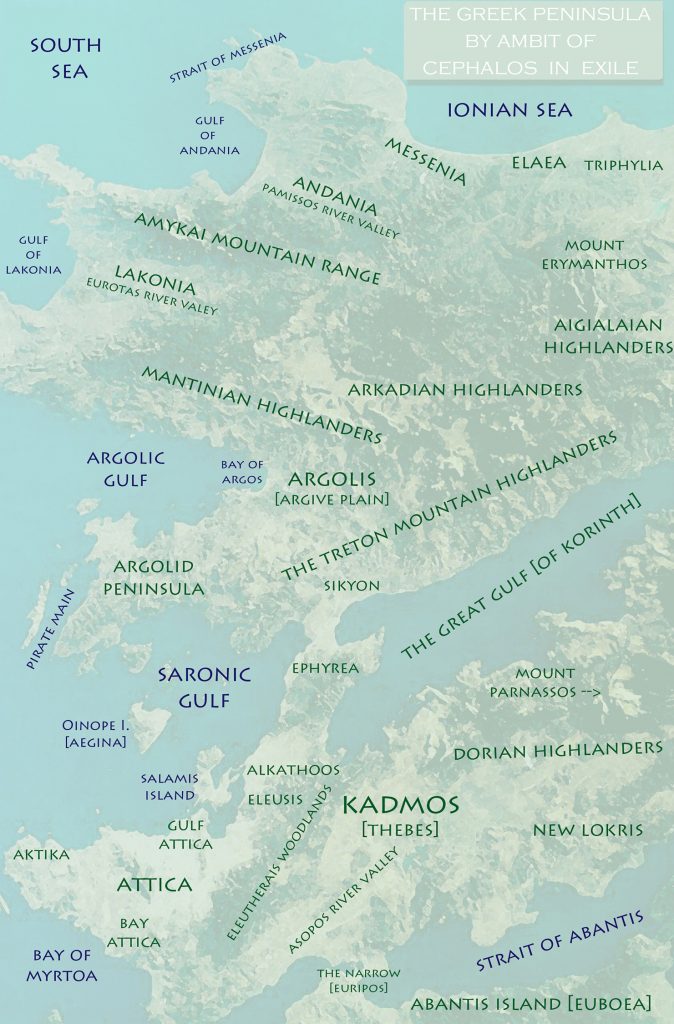
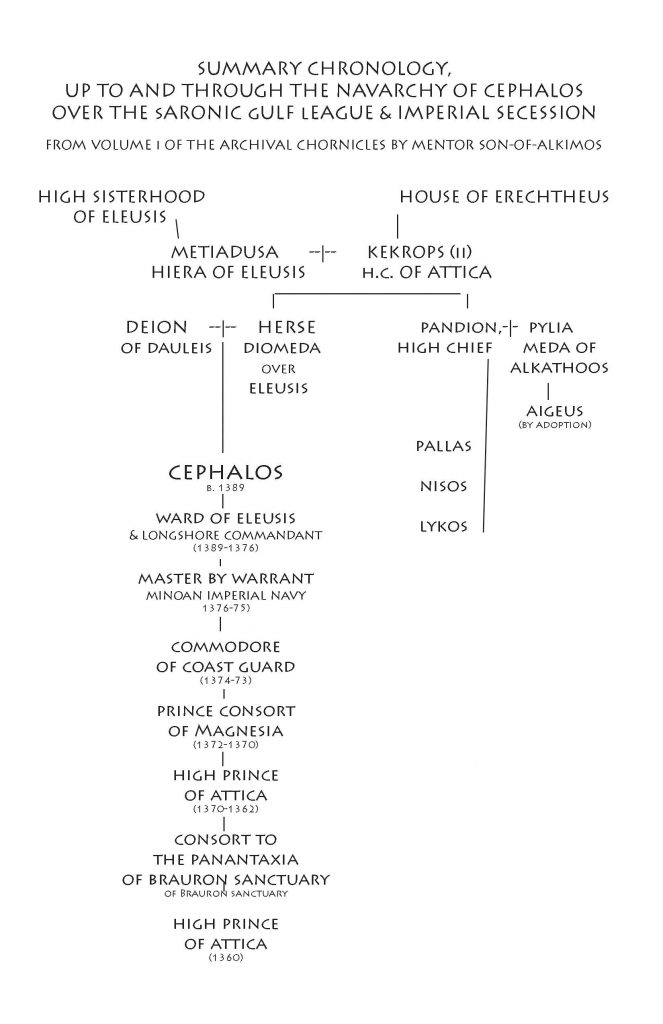
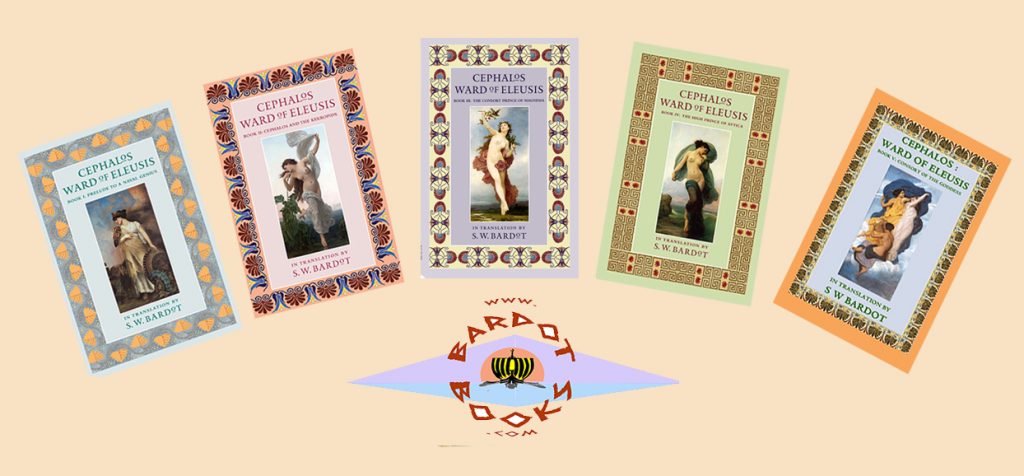
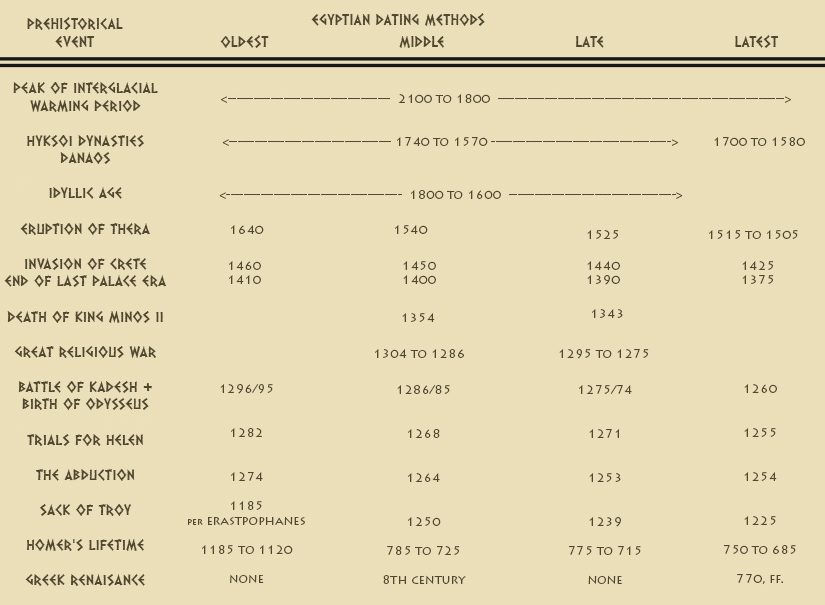


You must be logged in to post a comment.